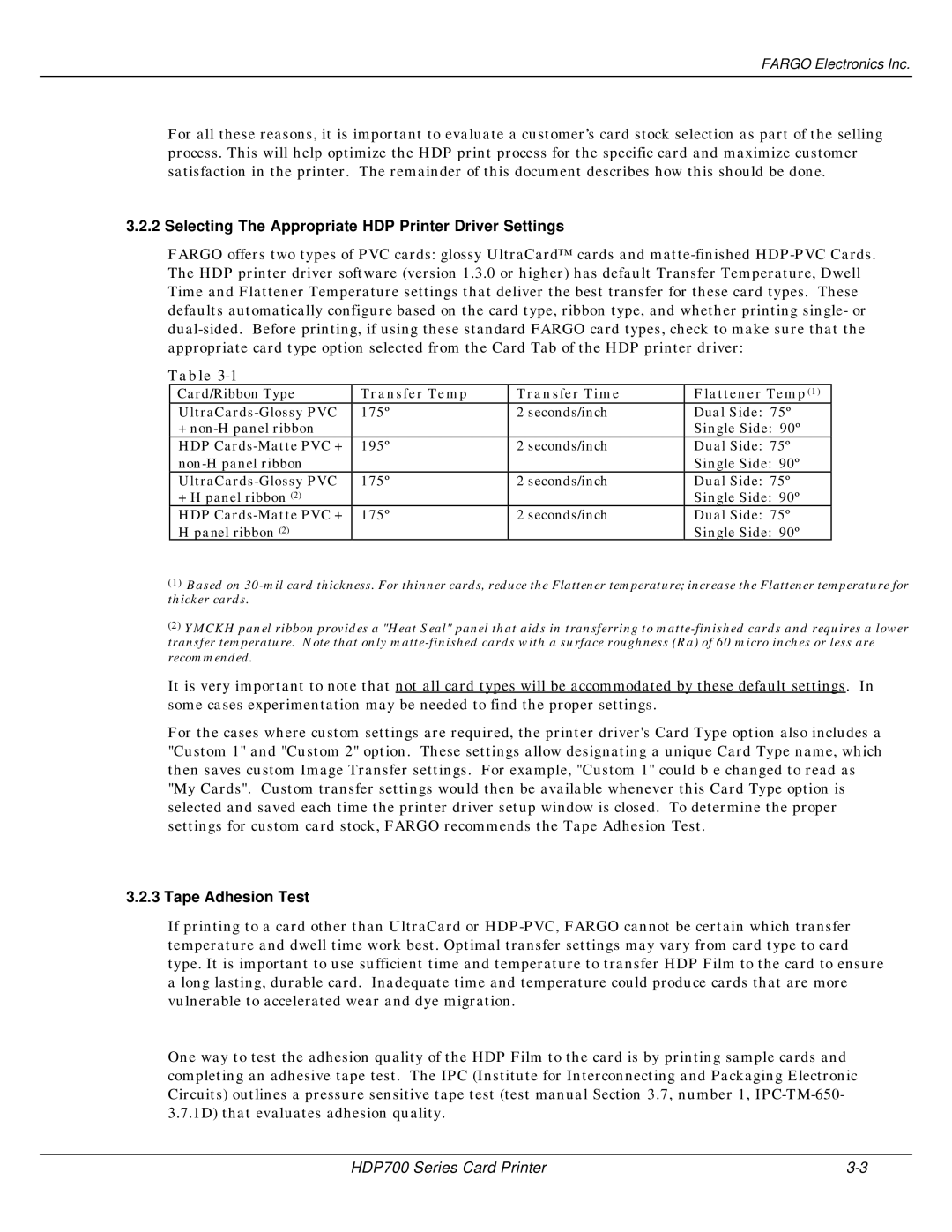
FARGO Electronics Inc.
For all these reasons, it is important to evaluate a customer’s card stock selection as part of the selling process. This will help optimize the HDP print process for the specific card and maximize customer satisfaction in the printer. The remainder of this document describes how this should be done.
3.2.2 Selecting The Appropriate HDP Printer Driver Settings
FARGO offers two types of PVC cards: glossy UltraCard™ cards and
Table
Card/Ribbon Type | Transfer Temp | Transfer Time | Flattener Temp(1) |
175º | 2 seconds/inch | Dual Side: 75º | |
+ |
|
| Single Side: 90º |
HDP | 195º | 2 seconds/inch | Dual Side: 75º |
|
| Single Side: 90º | |
175º | 2 seconds/inch | Dual Side: 75º | |
+ H panel ribbon (2) |
|
| Single Side: 90º |
HDP | 175º | 2 seconds/inch | Dual Side: 75º |
H panel ribbon (2) |
|
| Single Side: 90º |
(1)Based on
(2)YMCKH panel ribbon provides a "Heat Seal" panel that aids in transferring to
It is very important to note that not all card types will be accommodated by these default settings. In some cases experimentation may be needed to find the proper settings.
For the cases where custom settings are required, the printer driver's Card Type option also includes a "Custom 1" and "Custom 2" option. These settings allow designating a unique Card Type name, which then saves custom Image Transfer settings. For example, "Custom 1" could b e changed to read as "My Cards". Custom transfer settings would then be available whenever this Card Type option is selected and saved each time the printer driver setup window is closed. To determine the proper settings for custom card stock, FARGO recommends the Tape Adhesion Test.
3.2.3 Tape Adhesion Test
If printing to a card other than UltraCard or
One way to test the adhesion quality of the HDP Film to the card is by printing sample cards and completing an adhesive tape test. The IPC (Institute for Interconnecting and Packaging Electronic Circuits) outlines a pressure sensitive tape test (test manual Section 3.7, number 1,
HDP700 Series Card Printer |
